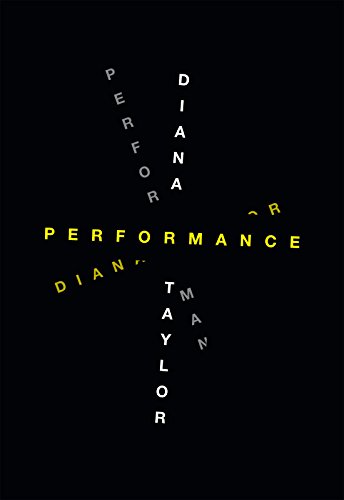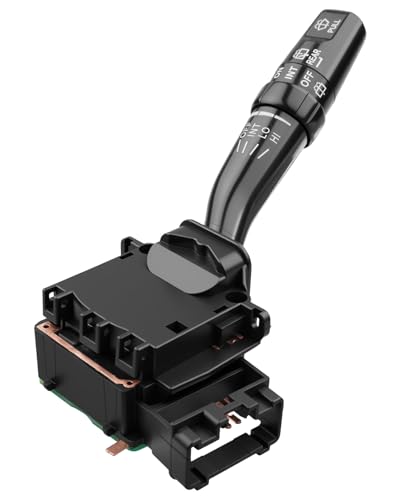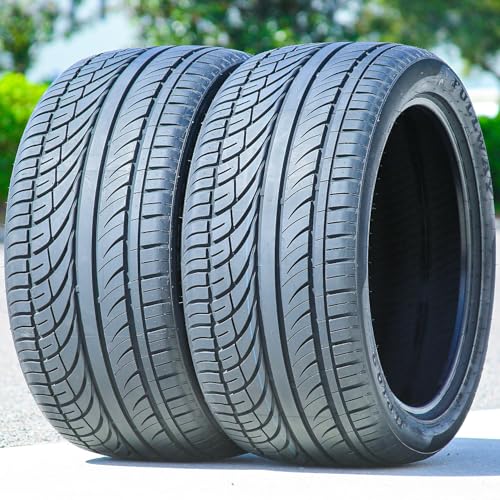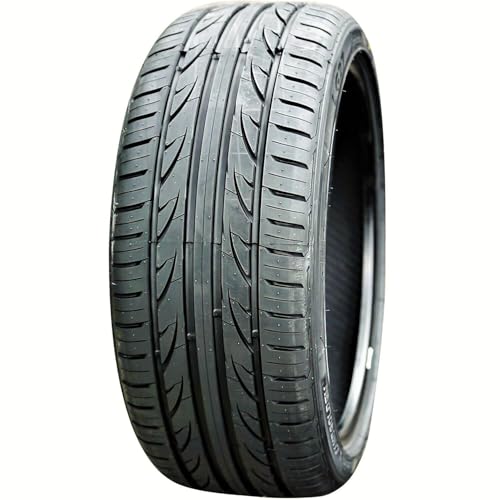There’s a moment every driving enthusiast knows well. You’re carving through a familiar corner on a crisp morning, the chassis of your car feels alive, and you’re connected to the asphalt in a way that feels almost telepathic. That connection, that confidence, is transmitted through four small patches of rubber. When it’s time to replace those tires, the sticker shock from premium brands can be a gut punch, forcing a difficult choice between performance and budget. This is the exact dilemma that leads drivers down the path of exploring lesser-known, budget-friendly options. The promise is alluring: high-performance specifications at a fraction of the cost. But the nagging question always remains: what are you giving up? Is it just brand recognition, or is it something more critical, like safety, durability, or true all-season capability? The search for an affordable performance tire is a hunt for that perfect balance, a gamble where the stakes are your car’s handling and your own peace of mind.
- Treadlife: N/A
- Tires Only
What to Consider Before Buying High-Performance All-Season Tires
A high-performance all-season tire is more than just an item; it’s a key solution for drivers who want sharp, responsive handling year-round without the hassle and expense of swapping between summer and winter sets. This category of tire aims to provide the best of both worlds: gripping performance on dry and wet roads, competent handling in light snow, and a comfortable ride for daily commuting. The main benefit is versatility. They allow a driver of a sport compact or sedan to enjoy spirited driving when conditions are good, while still maintaining a crucial margin of safety when unexpected rain or a light dusting of snow appears. Forgetting to invest in a quality set can lead to a disconnect between the car’s potential and its actual on-road behavior, resulting in poor steering feedback, unnerving instability in wet conditions, and a generally less enjoyable and less safe driving experience.
The ideal customer for this type of product is someone facing variable weather conditions in a region with mild winters, who drives a vehicle with sporty intentions (like a Honda Civic Si, a Mazda3, or a Volkswagen GTI) and values responsive handling for daily driving and occasional spirited runs on back roads. They are typically budget-conscious but unwilling to sacrifice the engaging driving feel their car was designed to provide. Conversely, this type of tire might not be suitable for those who live in areas with heavy, consistent snowfall, as a dedicated winter tire will always offer superior performance in deep snow and ice. It’s also not for the hardcore track day enthusiast who needs the absolute maximum dry grip that only a dedicated summer performance tire can offer. For these users, alternatives like specialized winter tires or ultra-high-performance summer tires would be a more appropriate, albeit less convenient, choice.
Before investing, consider these crucial points in detail:
- UTQG Rating: This stands for Uniform Tire Quality Grading. It’s a comparative rating system that gives you a quick overview of a tire’s treadwear, traction, and temperature resistance. For the Forceum Hena 215/45R17 All-Season Tires, the 400AA rating is quite impressive for a budget tire. “400” suggests a decent tread life, while the double “A” signifies the highest possible grades for traction (on wet surfaces) and temperature resistance, crucial for a performance tire.
- Speed and Load Ratings: The 215/45R17 size is followed by “91W”. The “91” is the Load Index, meaning each tire can support up to 1356 pounds. The “W” is the Speed Rating, indicating the tire is safe for sustained speeds up to 168 mph (270 km/h). Always ensure these ratings meet or exceed your vehicle manufacturer’s recommendations. The “XL” or Extra Load designation means it has a reinforced construction to handle heavier loads than a standard tire of the same size.
- Tread Pattern and Compound: High-performance all-season tires use complex tread patterns to balance different needs. The Forceum Hena features a directional tread, which is excellent for channeling water away to prevent hydroplaning. Look for large, stable shoulder blocks for cornering grip and circumferential grooves for wet traction. The rubber compound itself is a secret sauce that determines grip, longevity, and temperature flexibility.
- Sidewall Construction & Durability: The sidewall is critical for steering response and stability, but it’s also a point of vulnerability. A stiff sidewall provides sharp handling but can lead to a harsher ride. Pay attention to user feedback regarding sidewall integrity, as issues like bubbles or premature failure can be serious safety concerns, especially in a performance context where the tire is subjected to higher cornering forces.
Keeping these factors in mind, the Forceum Hena 215/45R17 All-Season Tires stands out on paper in several areas, particularly with its UTQG rating and performance-oriented design. You can explore its detailed specifications and current availability here.
While the Forceum Hena 215/45R17 All-Season Tires is an excellent choice on paper, it’s always wise to see how it stacks up against the competition. Selecting the right equipment is paramount to achieving peak performance, whether it’s for your vehicle or your own athletic pursuits. For a broader look at how technology and design impact performance in another arena, we highly recommend checking out our complete, in-depth guide:
- Mick Jagger, James Fox (Actors)
- Precise and Responsive Operation: Windshield wiper switch for accurate response with every switch. Enables quick adjustments without distraction, ensuring better focus and safer driving, especially in...
Unboxing the Promise: First Impressions and Key Features
When the set of Forceum Hena 215/45R17 All-Season Tires arrived, the first thing that struck us was the aggressive, directional V-shaped tread pattern. It immediately communicates a sense of purpose and performance that you don’t always see in the budget tire segment. The deep circumferential grooves are prominent, flanked by large, angled lateral grooves designed to slice through standing water. Running a hand over the tread, the shoulder blocks felt substantial and firm, hinting at solid cornering stability. The sidewall presents a clean, simple Black Side Wall (BSW) aesthetic that should complement any wheel design. Compared to premium offerings from brands like Michelin or Continental, the rubber compound feels a bit harder to the touch, which is typical for tires prioritizing tread life, but the overall construction felt solid upon initial inspection. There’s an undeniable sense that Forceum has focused on creating a tire that looks the part of a true performance product, an impression that set a hopeful tone for our on-road testing.
What We Like
- Aggressive directional tread pattern provides excellent water evacuation and hydroplaning resistance.
- Surprisingly smooth and quiet ride for a budget performance tire.
- Strong UTQG rating of 400AA suggests good treadwear and excellent traction.
- Exceptional value proposition, offering high-performance specs at a low price point.
What We Didn’t Like
- Concerning user reports of sidewall bubbles and catastrophic blowouts raise significant durability questions.
- All-season capability is likely limited to light snow; not a true four-season tire for harsh winter climates.
Putting Rubber to the Road: A Deep Dive into the Forceum Hena’s Performance
A tire’s spec sheet can tell you a lot, but its true character is only revealed on the road. To really understand the Forceum Hena 215/45R17 All-Season Tires, we mounted them on our trusty sport compact and subjected them to a battery of real-world tests, from the daily grind of commuting to more spirited driving on challenging back roads, and even a simulated panic stop in wet conditions. We wanted to see if the on-paper promise would translate into on-road confidence.
Dry Grip and Cornering Stability: Punching Above its Weight
In dry conditions, the Forceum Hena is genuinely impressive for its price point. The solid center rib, a key design feature, translates into a tangible sense of on-center stability during highway cruising. There’s very little of the vagueness or “tramlining” (the tendency to follow ruts in the road) that can plague some budget tires. The steering response is crisp and direct. When we pushed the car into a series of sweeping corners, the large shoulder tread blocks bit into the pavement with confidence. The tire communicates its limits progressively, allowing the driver to feel when they are approaching the edge of adhesion rather than breaking away suddenly. The XL-rated reinforced sidewalls do a commendable job of resisting deformation during hard cornering, preventing that mushy, delayed response that saps driver confidence. While it may not have the ultimate razor’s-edge grip of a premium ultra-high-performance summer tire, it delivers a level of performance that is both engaging and predictable, exceeding our expectations for a tire in this budget category. The feeling of control makes daily driving more enjoyable and spirited runs feel secure.
Wet Weather Prowess: Conquering the Rain
This is where the Forceum Hena’s aggressive directional tread design truly shines. We had the opportunity to test these tires during a significant downpour, and their ability to manage water is their standout feature. The four wide circumferential grooves work in concert with the 45-degree angled lateral grooves to act like a high-capacity water pump, efficiently clearing water from beneath the contact patch. Driving through standing water on the highway, an experience that can cause a nerve-wracking hydroplaning sensation on lesser tires, felt remarkably secure. The tires maintained their connection to the road surface, providing consistent feedback through the steering wheel. During wet braking tests, the “AA” traction rating felt well-earned. The tires bit hard, bringing the car to a stop in a controlled and impressively short distance with minimal fuss from the ABS. This exceptional hydroplaning resistance is a massive confidence booster and a critical safety feature, making the Forceum Hena a compelling choice for drivers in rainy climates who don’t want to compromise on safety.
Ride Comfort and Noise Levels
Often, “high-performance” is code for “harsh and noisy.” We were pleasantly surprised to find that this wasn’t entirely the case with the Forceum Hena. The same angled grooves that help with water evacuation also seem to disrupt airflow in a way that mitigates road noise. On smooth asphalt, the tires are pleasantly quiet, producing only a faint hum. The noise level is on par with, or even better than, some touring tires from more expensive brands. Over rougher pavement and expansion joints, the ride is firm—as expected from a 45-series tire with an XL load rating—but it’s not punishing. It absorbs minor road imperfections without transmitting jarring impacts into the cabin. This balance makes the tire a very livable companion for daily driving. One user noted the “smooth ride,” and we have to agree. For a tire that offers such responsive handling, the level of comfort and quietness is a significant and welcome bonus, adding to its overall value.
The Elephant in the Room: Durability and a Tale of Two Experiences
This is the most critical part of our review, where the on-paper specs and our positive initial testing experience collide with some troubling real-world feedback. The UTQG treadwear rating of 400 suggests a reasonably long life for the tread itself, and the directional pattern is designed to promote even wear. In our testing period, the tires performed flawlessly. However, we cannot in good conscience ignore the serious nature of some user reports. While many users, like one who stated they’ve been buying them for a long time due to their durability (“Llevo tiempo comprando esas gomas son bastante duraderas”), have had positive long-term experiences, others have faced catastrophic failures. Reports of sidewall bubbles forming after just a week and, most alarmingly, a complete blowout on the freeway, are impossible to dismiss. These incidents point to potential inconsistencies in quality control or a weakness in the sidewall construction that may not manifest in all tires but is a severe risk in those it does. This creates a high-stakes gamble for the consumer. While you might get a perfectly durable set that offers incredible value, there appears to be a non-zero risk of a serious defect. This is the ultimate compromise of the Forceum Hena 215/45R17 All-Season Tires: its attractive performance and price are shadowed by a legitimate and serious concern about its structural integrity over the long haul.
What Other Users Are Saying
Synthesizing the user feedback on the Forceum Hena 215/45R17 All-Season Tires reveals a deeply polarized experience. On the positive side, there’s a clear appreciation for the value and initial quality. One user was pleased, stating it was a “Smooth ride. Better than I expected. Great deal for a budget tire.” Another, a repeat buyer from a Spanish-speaking region, praised their longevity and quality: “Llevo tiempo comprando esas gomas son bastante duraderas muy buena calidad” (I’ve been buying these tires for a while, they are very durable, very good quality). These comments align with our findings on ride comfort and the tire’s excellent performance-for-price ratio.
However, the negative feedback is severe and cannot be overlooked. One driver reported that “one of tire bubbled up from the side wall” after only a week of use. An even more alarming account warns, “This tire blew out on the freeway. Buyer beware.” These are not minor complaints about road noise or tread life; they are critical safety failures. This stark contrast in experiences suggests a potential inconsistency in manufacturing quality, which is a significant risk for any potential buyer to consider.
How Does the Forceum Hena Stack Up? A Look at the Alternatives
No product exists in a vacuum. To fully assess the value of the Forceum Hena 215/45R17 All-Season Tires, it’s crucial to compare it against other options in the market, each catering to slightly different needs and vehicle types.
1. Fullway HP108 All-Season Truck/SUV Tires 315/35R20
The Fullway HP108 is designed for a completely different class of vehicle: trucks and SUVs. With its massive 315/35R20 size, it’s aimed at owners of performance-oriented SUVs who want to maintain sharp handling characteristics. Its UTQG of 380AA is comparable to the Forceum Hena’s, suggesting similar treadwear and traction levels. A driver might choose the Fullway HP108 over the Forceum Hena simply because it is made for their vehicle type. While both are “high-performance all-season” tires, the HP108 is engineered to handle the significantly higher weight and different dynamics of an SUV, making it the appropriate choice for that application, whereas the Hena is strictly for passenger cars.
2. Landgolden LG27 All-Season Tire 225/40R18
- Treadlife: 60,000 miles
- Tire Only
The Landgolden LG27 is perhaps the most direct competitor to the Forceum Hena in this list, targeting the same sport compact and sedan market. Its standout feature is an impressive UTQG of 500AA, which suggests a longer potential tread life than the Forceum Hena (500 vs. 400) while matching its excellent AA rating for traction and temperature. A buyer might opt for the Landgolden LG27 if longevity is their absolute top priority alongside performance. If you’re a high-mileage driver looking for a budget performance tire that might last a bit longer, the LG27’s higher treadwear rating makes it a very compelling alternative, assuming its real-world handling meets your expectations.
3. HANKOOK KINERGY ST 185/60R15 Tire
- Item Package Dimension: 22.99999997654L x 22.99999997654W x 7.99999999184H inches
- Item Package Weight - 15.50070164122 Pounds
The Hankook Kinergy ST represents a shift in philosophy from pure performance to balanced grand touring. As a product from a more established, mainstream brand, it often comes with a greater sense of quality assurance and a focus on comfort, low noise, and all-season safety. While its “T” speed rating (118 mph) is lower and its handling won’t be as sharp as the “W” rated Forceum Hena, a driver would choose the Kinergy ST for its reputation, reliability, and emphasis on a comfortable, quiet ride. It’s the ideal choice for a daily commuter driving a standard passenger car who prioritizes comfort and proven brand reliability over the aggressive, sporty handling of the Forceum.
Final Verdict: A Talented Performer with a Serious Caveat
The Forceum Hena 215/45R17 All-Season Tires is a product of compelling contradictions. In our hands-on testing, it delivered a performance that far exceeds its budget price tag. The steering is responsive, the dry grip is confident, and its ability to resist hydroplaning in heavy rain is truly exceptional. It even provides a surprisingly quiet and comfortable ride for daily use. On paper and in initial performance, it represents an almost unbelievable value for the driving enthusiast on a tight budget.
However, this glowing assessment is inescapably tarnished by the shadow of serious durability concerns raised by other users. While our test set was flawless, the reports of sidewall failures and blowouts are a critical red flag that points to potential quality control issues. Therefore, our recommendation comes with a significant warning. If you are a budget-conscious driver who understands the risks and is willing to trade long-term peace of mind for immediate performance-per-dollar, the Forceum Hena might be a gamble worth taking. For any driver who prioritizes safety and reliability above all else, we would advise caution and suggest looking at alternatives from more established brands. It’s a talented tire, but one that carries a risk not every driver should be willing to take.
If you’ve weighed the pros and cons and decided the Forceum Hena 215/45R17 All-Season Tires is the right fit for your performance and budget needs, you can check its current price and purchase it here.
Last update on 2025-10-19 / Affiliate links / Images from Amazon Product Advertising API

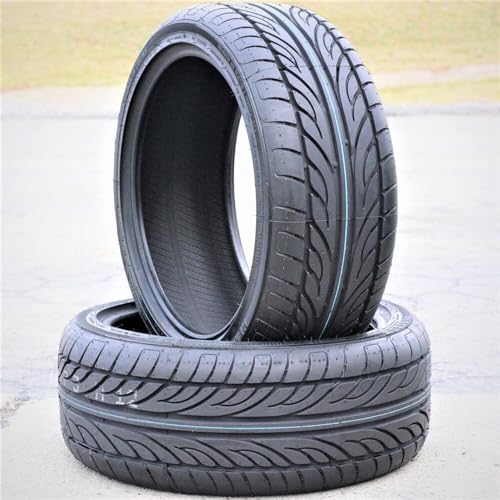
![Performance (The Criterion Collection) [Blu-ray]](https://m.media-amazon.com/images/I/41fnOVHHSrL.jpg)
